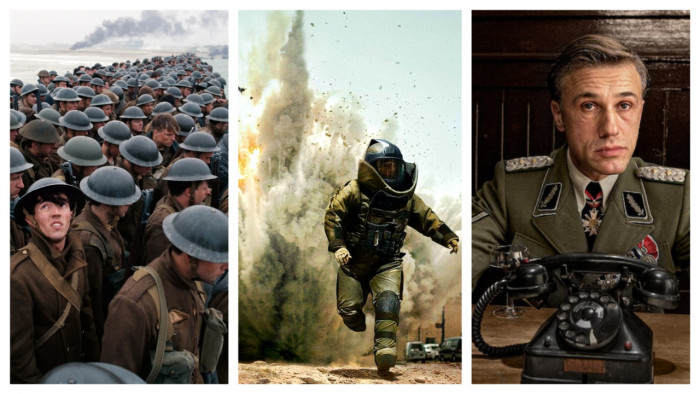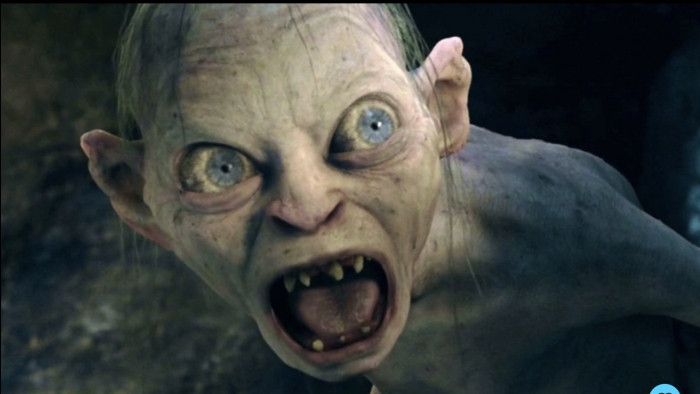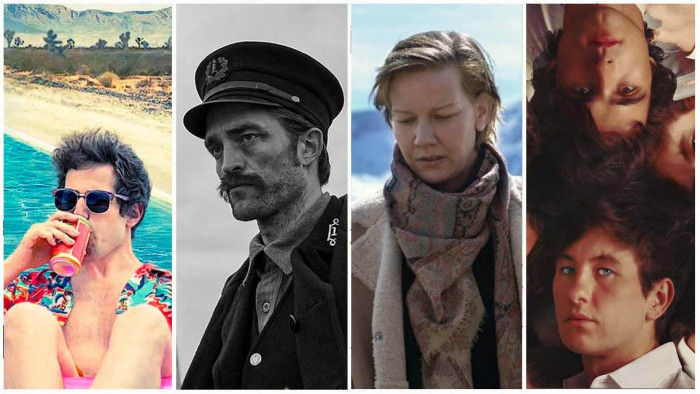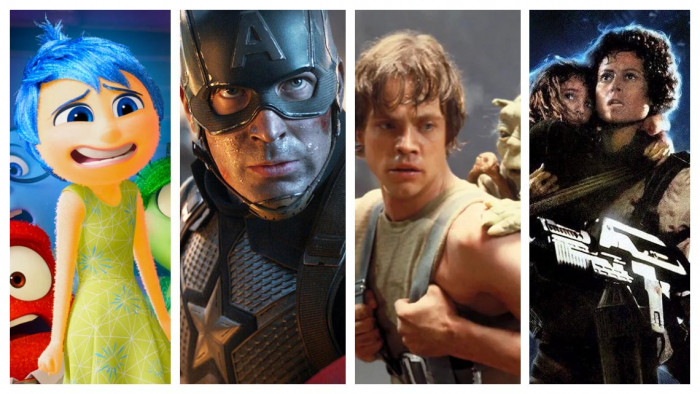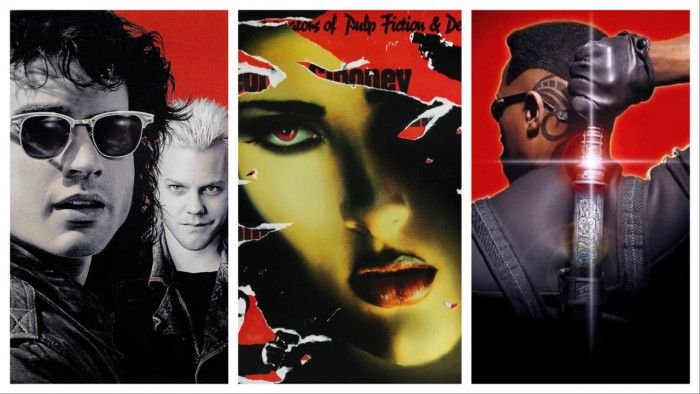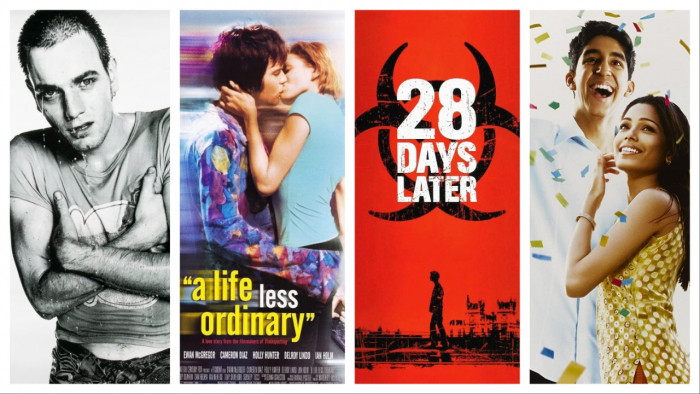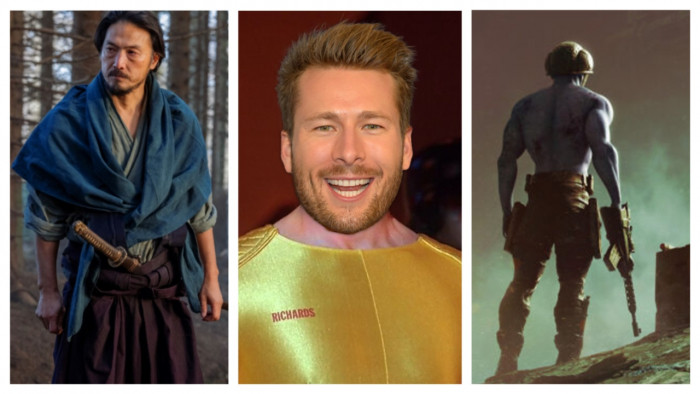Can a new team match the juvenile thrill of Nineties sci-fi and three-breasted streetwalkers? ShortList’s Andrew Dickens visits the set of Total Recall to find out
"Wake up!” shouts Jessica Biel. “C’mon! Wake up!”
I wake up.
Sadly, she’s not shouting at me – that would be quite the alarm call – but at Colin Farrell, who’s lying drenched and unconscious on a metal walkway 30ft above a Toronto sound stage. I wake up because I’ve been watching them film Total Recall for 14 hours, and I’m knackered. And there I was thinking it would all be plentiful smoothie breaks and lounging in luxurious trailers.
That said, it’s nothing compared to the work Farrell and Biel have been putting in today. They’ve been here a lot longer and, for most of that time, been rained on, shot at or both. This makes their high spirits all the more remarkable when they emerge, still wet, to answer questions about remaking the Arnold Schwarzenegger cult classic.
Except, are they remaking it? Yes. No. Sort of. Put it this way: they’re making a film from the same source material – Philip K Dick’s 1966 short story We Can Remember It For You Wholesale – using the same title and some of the same characters (including Farrell as Doug Quaid and Biel as Melina), but with a very different setting and take on Dick’s tale of a man, Quaid, whose past and present are tossed together in a confusing cognitive salad after he visits Rekall, a company that implants thrilling memories into the minds of people with mundane lives.
“It’s a real f*ck-off expensive love story that’s going to have some incredible set pieces and a lot of action as well,” Farrell says, clearly sticking to the official press release, before explaining one of the main differences. “The film’s split into two hemispheres – one being the Colony and the other being the United Federation Of Britain. So over in the Colony, which is mainly full of proletariat, the weather’s more symbolic of the more downtrodden existence that the people there have. So it’s always dark and rainy. And then in the UFB, which is very unlike Britain, the skies are sunny and clear and things are a little bit more optimistic.”
Dystopian design
Fourteen hours and many coffees earlier, production designer Patrick Tatopoulos introduces the geography of Total Recall, 2012-style. It’s a far-future Earth (no Mars visits and expanding faces this time) with the two territories described by Farrell at opposite sides of the world, making the Colony a potentially inflammatory name for what is effectively Australia. People travel from one to the other in 20 minutes via a gravity-propelled lift – called The Fall – that passes through the Earth’s core. According to Tatopoulos, it is theoretically feasible.
Going by the artwork, the two locations look magnificent. The UFB is an affluent megacity sprawling upwards from a recognisable London (complete with futuristic red double-deckers) and surrounded by a desolate wasteland (known to commuters these days as Zones 2-4); the rainy Colony’s inhabitants travel around in Chinese-style river boats. The rain-lashed Asian styling seems familiar.
“Were you conscious of Blade Runner?” I ask.
Cue awkward laughter.
“We were very conscious of that,” replies Tatopoulos. “We knew, somewhere, that we would look a bit like that, so we tried to [alter] a few things. They used big neon signs, we only used fluorescent, for example. It sounds like nothing, but it creates a very different look. Blade Runner was mostly huge structures. Here, it is more about small habitats that crawl up together. But yeah, we’re completely aware of [the comparison]. It’s not a bad thing to look like Blade Runner, but you don’t want to do that.”
Tatopoulos escorts me to the Colony, not as a 19th-century-style punishment for my question, but to show off part of his set. As expected, it’s wet everywhere, and you do half expect Harrison Ford to pop out of a doorway somewhere, but it’s the level of detail that catches the eye. A huge amount of care has gone into the artificially aged posters that will be blurry, unnoticed background colour in the film, but which provide comprehensive information on gigs that will never happen (though if you’ve got a spare $75 and a machine that transports you into fictitious futures, you might want to catch The Lead Screws at the Viceroy Bar – the imaginary reviews are excellent).
Tatopoulos explains that a very important plot point takes place on this very spot: it’s here, he says, that Quaid encounters a three-breasted prostitute. Some elements of the original, it seems, just couldn’t be left out.
Original Thinking
Although this is clearly a very different film, mutant ladies of the night aren’t the only nod to the past version. Some are subtle (and too good to spoil on these pages), while others, such as the characters, are fundamental. As mentioned, Quaid and Melina are back, but so is Cohaagen – the autocrat and all-round bad guy – played by an unusually blond Bryan Cranston.
“I approached Cohaagen as someone who sees himself as a benevolent leader,” says the Breaking Bad and Drive star. “He thinks that if the people just heed his words then everything will be great, so those who don’t cooperate need to be punished, because in his eyes they’re not working towards the greater good.”
Did he model his Cohaagen on anyone in particular?
“Yes: Mubarak, Duvalier, all the despots. Specifically, leaders who started off revered by their people and ended up seduced and corrupted by power. Tony Blair, too, for that matter. I think that if they start by charming their people and gaining their trust, rather than being a ruthless despot straight off the bat, then that tends to make the ensuing story arc more interesting.”
While I ponder that train of thought, Cranston is whisked off for his next scene and I’m invited to watch. At the entrance to the sound stage, a technician who looks uncannily like Ed Norton hands out pairs of earplugs “because there’s gunfire”. This is promising.
Inside, the promise is realised. Farrell lies prostrate in the middle of a huge helipad with Cranston standing over him, gun in hand. The pair are surrounded by an army of ‘synths’; Cohaagen’s robotic police who exist somewhere between the droids in I, Robot (coincidentally, another film where Tatopoulos was in charge of production design) and Star Wars stormtroopers. We’re on top of trans-continental lift The Fall and, I guess, at a fairly climactic moment.
Like a demigod in a fold-up chair, the director Len Wiseman (responsible for Die Hard 4.0 and the Underworld franchise) calls for rain and rain comes, whipped across the set by powerful fans. Some inaudible words are said by the leading protagonists before the reason for the earplugs becomes apparent. A volley of gunfire from the synths pierces the air (and any unprotected eardrums). To ensure Farrell never gets dry, the scene is reset and reshot several times.
Eventually 11pm comes around and I’m back with those wet but high-spirited, perhaps demob happy, actors. I ask Farrell a final question: now he’s in an Arnie film, does he feel like a proper action hero?
“Not really,” he says. “I feel like a wet, cold man with a gun.”
Latest
Related Reviews and Shortlists


10 of The Best Spike Lee Joints


The best movies on Netflix: this is what to watch

